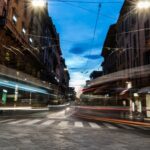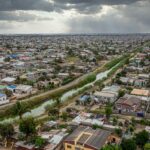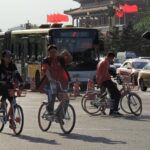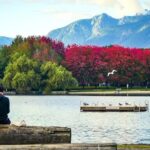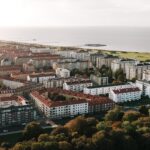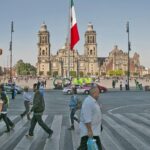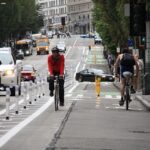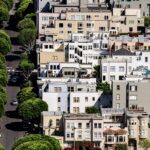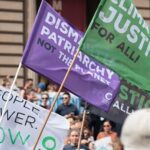Search Results
Countries agreed to limit global warming to well below 2 degrees C (3.6 degrees F) and ideally 1.5 degrees C (2.7 degrees F) as part of the 2015 Paris Agreement. The latest science shows that emissions will need to drop ...

Along the Ngong River in Mukuru, one of Nairobi’s slum neighborhoods and home to more than 100,000 people, residents face a dual threat when the rains come. First, the river rises, flooding into streets and houses. Then the water reaches ...

City dwellers worldwide are shifting lifestyles as a result of the COVID-19 pandemic, especially in terms of transport. As cities begin to re-open, urban planners and designers are rethinking urban and transport infrastructure to adapt to a post-pandemic world. When ...

COVID-19 has brought many lessons for urban planners, illuminating existing inequalities and flaws as well as introducing new challenges. One such lesson, as people seek open space and tranquility in tumultuous times, is that parks and natural areas are crucial ...

It was a contrast of opportunities and challenges confronting cities around the world highlighted at the Daring Cities forum’s final session on October 28, the culmination of three weeks, 400 speakers and 200 hours of dialogue and knowledge exchange. Mayor ...

In a groundbreaking move for national road safety policy, Mexico has elevated to their constitution a universal right to safe mobility. On October 14, the country’s Chamber of Deputies unanimously voted in favor of adding an amendment to Mexico’s constitution: ...

Cities are redefining their relationship with transport and it’s some of the smallest vehicles that are leading the way. Shared bike services, e-bikes, scooters and mopeds, together known as micromobility, are proliferating in the urban landscape. Recent changes in mobility ...

Can a city where pedestrians, cyclists and children get injured or killed on the roads be a truly sustainable one? Given the rapid urbanization of the world’s population, road safety is a critical development and sustainability issue. This episode of ...

Their goal is an ambitious one: make the world more prosperous by transitioning it from a linear economy that only works from inputs to outputs to a circular economy that loops both together. Instead of designing clothing to be cast ...

Around the world, communities of color and marginalized groups disproportionately feel the effects of pollution and other environmental impacts. Whether it’s residents living along the polluted Cooum River in Chennai, India; Louisiana’s petrochemical-dense Cancer Alley; Thailand’s toxic hot spot Map Ta Phut Industrial ...

The city is a difficult place for a tree to survive. Compared to their counterparts in the countryside, urban trees generally get less water, suffer more intense heat, compete for space with unyielding infrastructure and frequently become riddled with disease ...

Create quieter delivery solutions. Declutter the roads and improve safety. Deliver goods more efficiently. Fastrack the development of alternative fuel technologies. Those were just some of the solutions explored at the Daring Cities forum last week during two sessions on sustainable ...

We need to reframe the concept of inclusive cities. That observation made by renowned urbanist Günter Meinert helped set the tone for a deep discussion on more equitable cities during the Daring Cities forum, a free virtual event geared for local ...

COVID-19 has affected almost all aspects of transportation. For the public sector, economic shutdowns have gutted the tax revenue needed to buy and maintain government vehicle fleets. Perhaps no municipal entity has been hit harder than public transit agencies, which ...

In 2015, the City of Oslo, Norway, made a commitment after years of rising transportation injuries to reduce car traffic and prioritize the safety of pedestrians, cyclists and the environment. Unlike in the United States and other countries where transportation ...

Page 22 of 228« First...10...212223...3040...Last »






